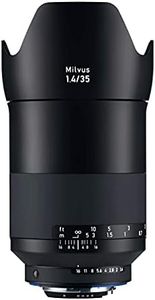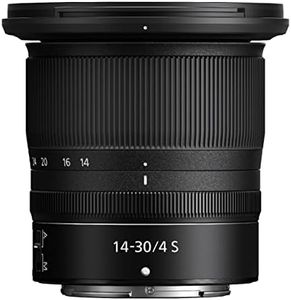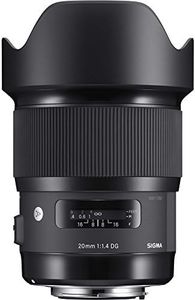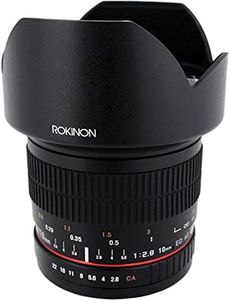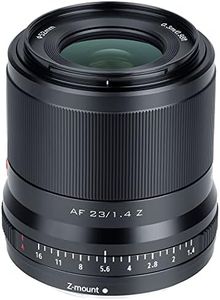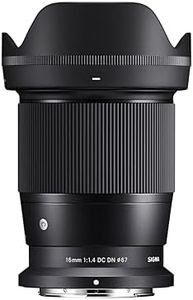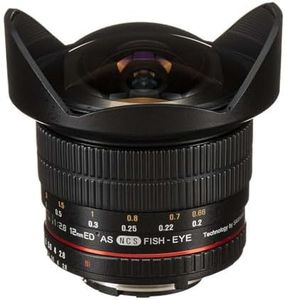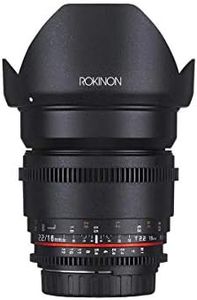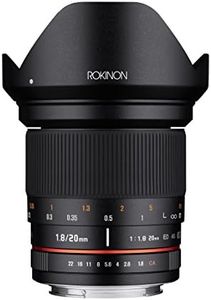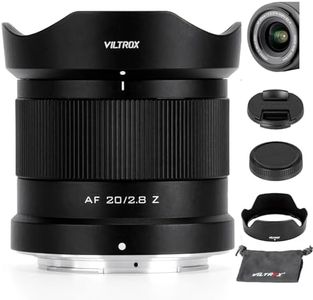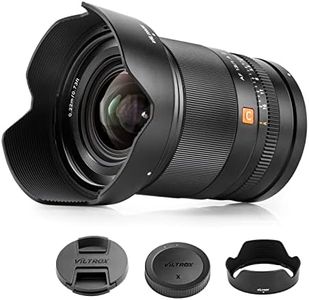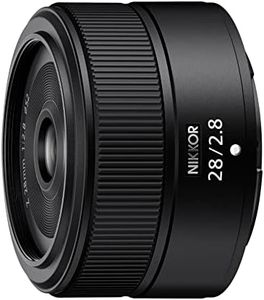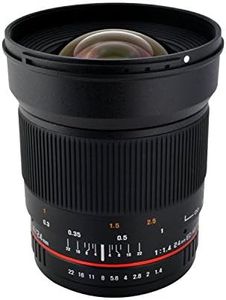We Use CookiesWe use cookies to enhance the security, performance,
functionality and for analytical and promotional activities. By continuing to browse this site you
are agreeing to our privacy policy
10 Best Wide Angle Lenses For Nikon Cameras
From leading brands and best sellers available on the web.By clicking on a link to a third party's website, log data is shared with that third party.
Buying Guide for the Best Wide Angle Lenses For Nikon Cameras
Choosing the right wide-angle lens for your Nikon camera can make a big difference in your photography, especially if you love landscape, architecture, or interior shots. Wide-angle lenses allow you to capture much more of a scene in a single frame, giving images a sense of depth and space. When selecting a lens, understanding a few key specifications will help you find the best fit for what you love to shoot and how you like to work.Focal LengthFocal length, measured in millimeters (mm), determines how wide or narrow your field of view will be. Wide-angle lenses typically range from about 10mm to 35mm. Lenses on the lower end (10-20mm) capture a broader view and produce more dramatic effects, which is great for landscapes or dramatic architecture shots. Lenses in the 20-35mm range are still wide but offer a more natural perspective that works well for group photos and interiors. The right focal length for you depends on what you shoot most often and how much of the scene you want to capture.
ApertureThe aperture, described by an f/number like f/2.8 or f/4, refers to how much light the lens lets in. Lenses with lower f/numbers (such as f/2.8) let in more light, which is useful if you often shoot indoors, in low light, or want blurry backgrounds. Higher f/numbers (such as f/4 or higher) let in less light but can still provide excellent image quality. If you frequently shoot in dim lighting or want more creative options, a lens with a wider maximum aperture (lower f/number) might be best for you.
Autofocus Motor TypeLenses may have different autofocus technologies, which affect how fast and quietly they focus. Some use silent wave motors, while others use more basic systems. Silent motors are quieter and smoother, making them ideal for video or events where silence is helpful. If you often shoot moving subjects or need quick focusing, a lens with advanced or silent autofocus is worth considering; for static scenes or careful, manual focusing, this spec might be less crucial.
Image StabilizationImage stabilization is a feature that helps reduce blur from camera shake, especially in low light or when hand-holding the camera. Some lenses have this feature built-in and it’s known by terms like 'VR' (Vibration Reduction). If you often shoot in situations where a tripod is not practical, or if you use slower shutter speeds, picking a lens with image stabilization can help ensure sharper photos.
Compatibility (Mount and Sensor Size)Nikon cameras come in different sensor sizes (like full-frame and crop-sensor/DX), and lenses are designed to match these. It’s important to check that the lens fits your camera mount and is made for the sensor size you own. Using a lens designed for a different sensor might give unexpected results, like cropping or vignetting. Always make sure the lens is fully compatible with your camera to get the best performance and image quality.
Size and WeightWide-angle lenses come in various sizes and weights, which affects how easy they are to carry and use. If you travel a lot or like to shoot on the go, a lighter and more compact lens can be more comfortable. Heavier lenses may offer better build quality or larger apertures, but can be tiring to carry for extended periods. Think about how and where you typically shoot to choose a lens that suits your needs.
